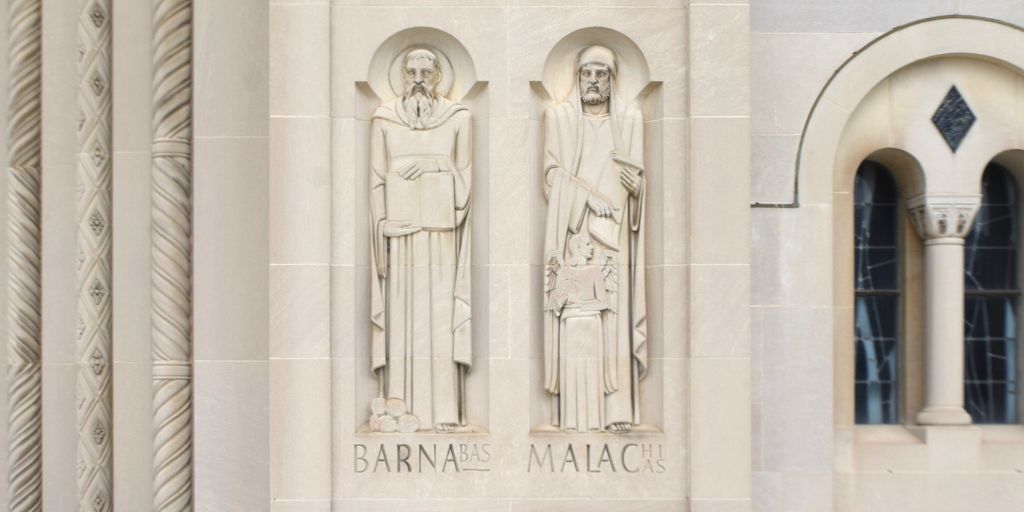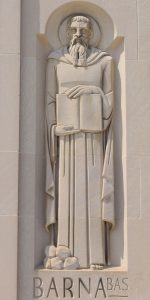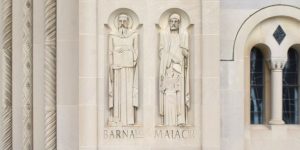
How well do you know the story of St. Barnabas? An influential leader in the early church, he helped bring many to Christ, shepherding the church at Antioch and planting churches throughout Asia Minor alongside Paul. As we celebrate his Memorial on June 11, we invite you to discover five things about his life and legacy.
1. His name means “son of encouragement.”
Also known as Joseph, Barnabas was of Jewish heritage and a member of the Christian community in Jerusalem. The name Barnabas, which means “son of encouragement,” aptly describes his steadfast support of many in the church; the first mention of Barnabas in Acts 4 relates how he sold his property and donated the proceeds to the apostles, and in Acts 11:24, he is described as “a good man, filled with the Holy Spirit and faith.”

2. Following Paul’s conversion, Barnabas helped convince the other disciples to let him join their ministry.
Eventually, Paul served alongside Barnabas in many ministries, helping grow the church at Antioch and also going on missions with him. But in the beginning, Barnabas had to convince the other disciples to let Paul join their ministry. Given Paul’s history of persecuting Christians, the other disciples were skeptical of the sincerity of his conversion at first, but finally agreed to let him join their ministry thanks to Barnabas’ efforts testifying to his acts of faith (Acts 9:26-28).
3. Barnabas preached to both Jewish and Gentile audiences.
Not only did Barnabas work alongside Paul to expand the church in Antioch, but together they also embarked on Gospel missions to Seleucia, Cyprus, Pisidia, Iconium, and Lystra. As they began their journey, Paul and Barnabas preached the Gospel to the Jewish people. However, many of them were unreceptive, and Paul and Barnabas decided to focus on preaching to the Gentiles for a time. During a period when many converted Jews still looked down on Gentiles, Barnabas and Paul made it clear that the Gospel was for all who would believe.
4. In Lystra, the people tried to call him a god.
When Barnabas and Paul were ministering in Lystra, they encountered a man who had been crippled his entire life. Paul commanded the man to stand up, and he immediately began to walk, to the great awe of the crowds gathered. The crowds began to shout that the gods had come to them in human form, calling Paul and Barnabas “Zeus” and “Hermes,” but Paul and Barnabas tore their garments and corrected them, saying that they were simply men like the others, and encouraging them to believe in the true God.
5. Paul and Barnabas eventually parted ways in their ministry.
Paul and Barnabas eventually separated after a disagreement over whether they should take Mark with them on a second journey to encourage the believers. Paul then took Silas with him to Syria, while Barnabas took Mark and traveled to Cyprus.
Whatever differences they may have had, Paul and Barnabas not only helped the church at Antioch grow, but planted numerous churches throughout Asia Minor, bringing many to Christ and strengthening the faith of believers. In the Basilica, you can find Barnabas portrayed in the East Buttress of the South Entrance.


